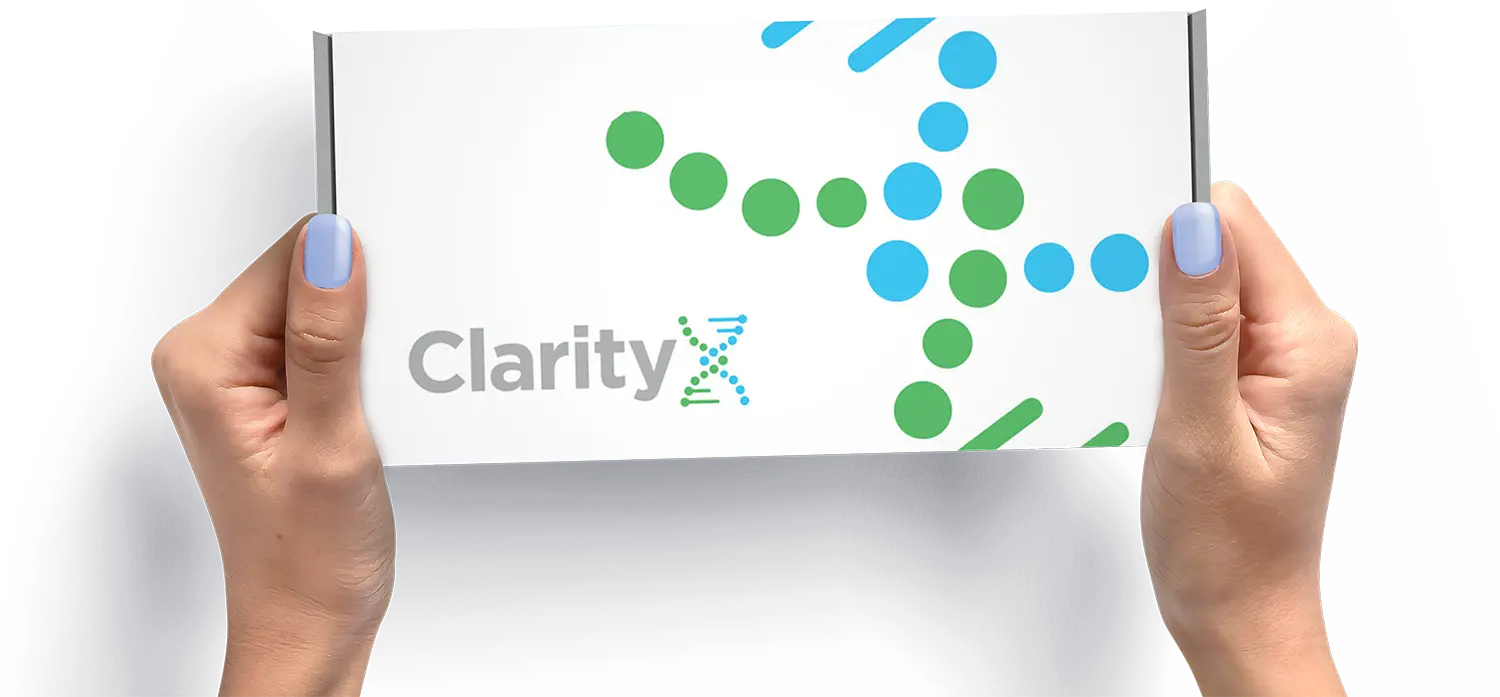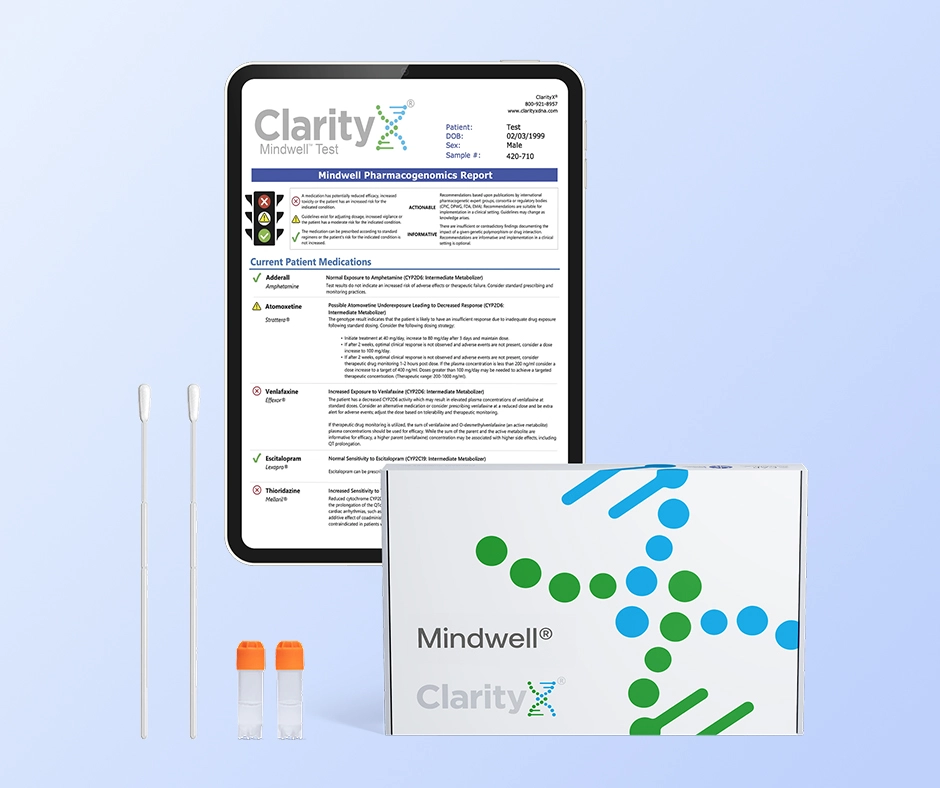There are a lot of different types of antidepressants available on the market, many of which may seem similar at first glance. While some antidepressants share certain characteristics, there are distinct differences between them that may cause people who have been diagnosed with depression to opt for one over another. Paxil and Zoloft are two of the most commonly prescribed antidepressants. Understanding how each of these medications works, and learning about their intricacies, the potential side effects that may accompany them, and how they may interact with your chemical makeup could help you and your healthcare provider determine which antidepressant is right for you. Pharmacogenetic testing for antidepressants may also help.
Major depressive disorder (MDD) is a serious mental health condition that affects many people all over the world. In the United States alone, an estimated 14.8 million adults experienced at least one major depressive episode in 2020.1 While the global pandemic and its aftermath may have majorly contributed to this number, that is still 6.0% of the entire U.S. adult population. Furthermore, those are only the numbers that were reported for people aged 18 and older – the total number of people suffering from depression includes an additional 4.1 million adolescents as well as cases that go unreported.
Antidepressants are prescribed by healthcare providers to help those struggling with depression manage their symptoms and experience relief. Determining which antidepressant to take used to involve a significant amount of trial and error and often resulted in patients being subjected to unnecessary side effects and negative experiences. Advances in science and technology have given rise to the field of genetic testing for antidepressants; this has opened a world of possibilities for prescribing the right medication for depression. If you are considering whether Paxil vs Zoloft is the better antidepressant for you, ClarityX may be able to help.
Paxil vs Zoloft
Both Paxil and Zoloft are antidepressants that may help those who have been diagnosed with depression manage their symptoms. Antidepressants are not a cure for depression, but they are a viable treatment option for helping people with Major Depressive Disorder (MDD) reduce the severity of their symptoms.
Antidepressants come in many forms, including SSRIs, SNRIs, NaSSAs, TCAs, SNaRIs, MAOIs, and more. Selective serotonin reuptake inhibitors (SSRIs) are the most commonly prescribed form of antidepressant. Both Paxil and Zoloft are SSRI antidepressants used to help manage the symptoms associated with depression.
Paxil vs Zoloft: Two SSRIs
Selective serotonin reuptake inhibitors (SSRIs) work by increasing the levels of serotonin in the brain. Also known as 5-hydroxytryptamine (5-HT), serotonin is a monoamine neurotransmitter that transports messages from nerve cells in the brain to the rest of the body.
Serotonin plays a vital role in mood, sleep, digestion, nausea, wound healing, bone health, blood clotting, libido, and many other bodily functions. An insufficient amount of serotonin in the body and/or the body’s inability to effectively use serotonin may contribute to depression and anxiety. SSRIs block the reabsorption of serotonin into neurons, which enables individuals with depression to use serotonin more efficiently.
Paxil Vs Zoloft: What are They?
People who have depression may experience feelings of extreme sadness, hopelessness, and a general loss of interest. Depression can also be more than feelings of sadness; it may look like trouble completing “normal” day-to-day activities; experiencing excessive anger, irritation, and frustration; having difficulty sleeping, suicidal thoughts, and enduring physical symptoms such as headaches, body aches, and pain.
Both Paroxetine (Paxil) and Sertraline (Zoloft) are antidepressants and SSRIs that may be able to help with depression. The ways in which these medications interact with each person depending on their metabolisms, body chemistry makeups, weight, medical conditions, other medications they may be taking, and a variety of other factors.
Understanding the differences between these medications may help you and your doctor make a more informed decision about whether Paxil vs Zoloft is best for you. We’ll take a closer look at how each of these antidepressants works to provide you with the most comprehensive information possible.
What is Paxil?
Paroxetine (Paxil) is a prescription psychotropic medication used as a treatment for depression as well as several other mental health conditions. This SSRI antidepressant is the hydrochloride salt of a phenylpiperidine compound that works by balancing the levels of serotonin in the brain to prevent the body from quickly reabsorbing it.
Paxil has been FDA approved for use as a treatment option for adults with:
- Major depressive disorder (MDD)
- Obsessive-compulsive disorder (OCD)
- Social anxiety disorder (SAD)
- Generalized anxiety disorder (GAD)
- Posttraumatic stress disorder (PTSD)
- Premenstrual dysphoric disorder (PMDD)
- Panic disorders
- Vasomotor symptoms associated with menopause
Paxil has not been approved for use in children under the age of 18. Doing so may increase the risk of suicidal thinking and attempts.3
What is Zoloft?
Sertraline (Zoloft) is another SSRI antidepressant that may be used for moderate-to-severe major depressive disorder (MDD) as well as other mood and mental health conditions.
Zoloft has been approved by the FDA for use as a treatment option for individuals with:
- Major depressive disorder (MDD)
- Obsessive-compulsive disorder (OCD)
- Social anxiety disorder (SAD)
- Posttraumatic stress disorder (PTSD)
- Premenstrual dysphoric disorder (PMDD)
- Panic disorders
Off-label uses for Zoloft include treatment for headaches and sexual problems.
Zoloft has not been approved to treat pediatric depression. Unlike Paxil, Zoloft has been approved by the FDA as a treatment option for obsessive-compulsive disorder (OCD) in children and adolescents.
Paxil vs Zoloft: Common Side Effects
Bringing a new medication of any kind into your routine comes with a risk of side effects, all of which may affect individuals differently. Some side effects of antidepressants like Paxil and Zoloft are more common than others. Read on to learn more about some of the most common side effects users may experience when taking Paxil vs Zoloft.
Common Side Effects with Paxil
Some people who take Paxil have reported the following side effects:
- Nausea
- Headaches
- Dizziness
- Drowsiness
- Insomnia
- Weakness
- Difficulty concentrating
- Loss of appetite
- Dry mouth
- Increased sweating
- Blurred vision
- Diarrhea
- Constipation
- Changes in ability to taste food
- Weight loss or gain
- Sexual problems
- Pain in the back, muscles, bones, or anywhere in the body
- Tenderness or swelling of joints
Most side effects will improve after 1-2 weeks of starting treatment with Paxil.4
Common Side Effects with Zoloft
Taking Zoloft may come with certain side effects, many of which are similar or the same to those that may be experienced with Paxil. Some of these include:
- Headaches
- Nausea
- Diarrhea
- Dry mouth
- Increased sweating
- Nervousness
- Restlessness
- Insomnia
- Loss of appetite
- Sexual problems
More serious side effects such as serotonin syndrome/toxicity, low sodium levels, glaucoma, and seizures are rare but should be addressed by a medical professional immediately. Sexual side effects (including decreased sex drive, inability to get or keep an erection, delayed or absent ejaculation, delayed orgasm, or inability to have an orgasm) may not improve over time.
How people respond to antidepressants such as Paxil and Zoloft depends on a variety of factors, most of which change from one person to another. Side effects typically usually lessen over time. Dosage may impact the severity of side effects. Please consult your doctor or a healthcare professional if you experience lingering or unwanted side effects from taking any medication.
Paxil vs Zoloft: Forms & Dosage
Paxil Forms & Dosage
Paxil should always be taken exactly as prescribed by your healthcare provider. Your physician will prescribe the dose of Paxil they feel is right for you based on your symptoms, medical history, diagnosis, and your overall condition. This will typically start at a low dose and increase gradually as needed.
Paxil comes in an immediate-release tablet, capsule, oral suspension, and controlled-release tablet form (Paxil CR). Immediate-release Paxil is available in 10 mg, 20 mg, 30 mg, and 40 mg strength tablets. The capsule form is available in a 7.5mg strength. The oral suspension (liquid) form of Paxil is available in a 10mg/5mL. Paxil CR comes in 12.5 mg, 25 mg, and 37.5 mg strength tablets.5 Please note that the standard suggested dose for Paxil will vary based on your intended treatment plan.
Zoloft Forms & Dosage
Just like Paxil, Zoloft should always be taken exactly as prescribed by your healthcare provider. Please do not exceed the dosage amount or frequency that was prescribed to you. Zoloft is available in tablet, capsule, and oral solution form. Capsules are available at 150mg and 200mg doses; tablets come in 25mg, 50mg, and 100mg; oral solutions are available at 20mg/mL.6
Your doctor will advise which dosage is suggested for you based on your symptoms, family history, medical history, and risk of side effects.
Paxil Vs Zoloft: Interactions with Other Medications
Many antidepressants like Paxil and Zoloft should not be taken with certain other medications as doing so may increase the likelihood of negative side effects. Avoid taking Paxil and Zoloft with monoamine oxidase inhibitors (MAOIs). If you are currently on MAOIs, you will typically need to wait 2 weeks before you can start either Paxil or Zoloft. Please speak with a trusted healthcare provider prior to starting or stopping any medication.
Taking Paxil or Zoloft with other antidepressants such as buspirone (Buspar), lithium (Lithobid), migraine medications like “triptans'', and certain pain medications such as tramadol (Ultram®), antibiotics like linezolid (Zyvox®), and intravenous methylene blue could increase the risk of developing serotonin syndrome, which may be serious. Additionally, do not take Paxil and Zoloft together as doing so could also increase the risk of serotonin syndrome.
It is also not advised to take Paxil and Zoloft with pain relievers such as ibuprofen (aspiring, Advil®, and Motril®) and blood thinners like warfarin (Coumadin®). Doing so may increase the risk of bleeding.
Paxil Vs Zoloft: How Long Does It Take to Start Working?
How long it takes Paxil or Zoloft to start working depends on several factors, many of which will be individual to the person taking the medication based on chemical makeup, height, weight, and other medications they may be taking. Some people may see improvement in sleep, energy, and appetite within the first 1-2 weeks of taking either Paxil or Zoloft. While these symptoms may improve initially, it could take between 6-8 weeks for either antidepressant to make a significant impact on depression and mood.7
Paxil or Zoloft: Which One Should I Take?
Paxil and Zoloft are antidepressant medications designed to help treat depression. While the two share many similarities, there are reasons to take one versus the other. Both Paxil and Zoloft can inhibit the CYP2C9/19 and CYP2D6 genes, but sertraline (Zoloft) may do so to a lesser degree than paroxetine (Paxil).8 Additionally, some users say that Zoloft is better suited for helping with relaxation whereas Paxil is more effective for addressing anxiety. Some people experience more unwanted side effects with Paxil than with Zoloft. While Zoloft is approved as a treatment option for children and adolescents with OCD, Paxil is not. On the other hand, Paxil may be a better treatment option than Zoloft for people suffering from certain mental health conditions and physical conditions such as anxiety and hot flashes.
Genetic testing for antidepressants may help determine whether Paxil vs. Zoloft is most suitable for your needs. Please speak with your healthcare provider about the reasons they may favor one antidepressant over the other to determine whether Paxil vs. Zoloft is the better option for you.
Paxil vs Zoloft: Similarities and Differences
ClarityX: Pharmacogenetics Testing
The DNA that makes up our bodies contains valuable information that may help determine how we will respond to certain medications including antidepressants. ClarityX examines DNA to uncover this information and provide patients with detailed analyses of how they may react to taking certain drugs. We look for variations with the Cytochrome P450 enzymes, which metabolize over 70% of drugs, including the enzymes CYP2C19 and CYP2D6 that are responsible for how you may react to Paxil and Zoloft. ClarityX’s pharmacogenetic testing offers two testing options to help individuals determine which medications may be best suited for their needs:
- Mindwell test: This focuses on treatments for mental health conditions that include but are not limited to depression, anxiety, ADHD, OCD, and more.
- Max Rx test: This covers 31 therapeutic areas to test how an individual may respond to more than 265 medications.
Both the Mindwell and Max Rx tests may help determine how you will react to Paxil and Zoloft. This could help you and your healthcare provider make more informed decisions about your treatment plan. Click here to learn more.
1https://www.nimh.nih.gov/health/statistics/major-depression
2https://my.clevelandclinic.org/health/articles/22572-serotonin
3https://www.medicinenet.com/script/main/art.asp?articlekey=23694
4https://medlineplus.gov/druginfo/meds/a698032.html
5https://reference.medscape.com/drug/paxil-brisdelle-paroxetine-342959
6https://reference.medscape.com/drug/zoloft-sertraline-342962
8https://www.ncbi.nlm.nih.gov/pmc/articles/PMC4047306/





